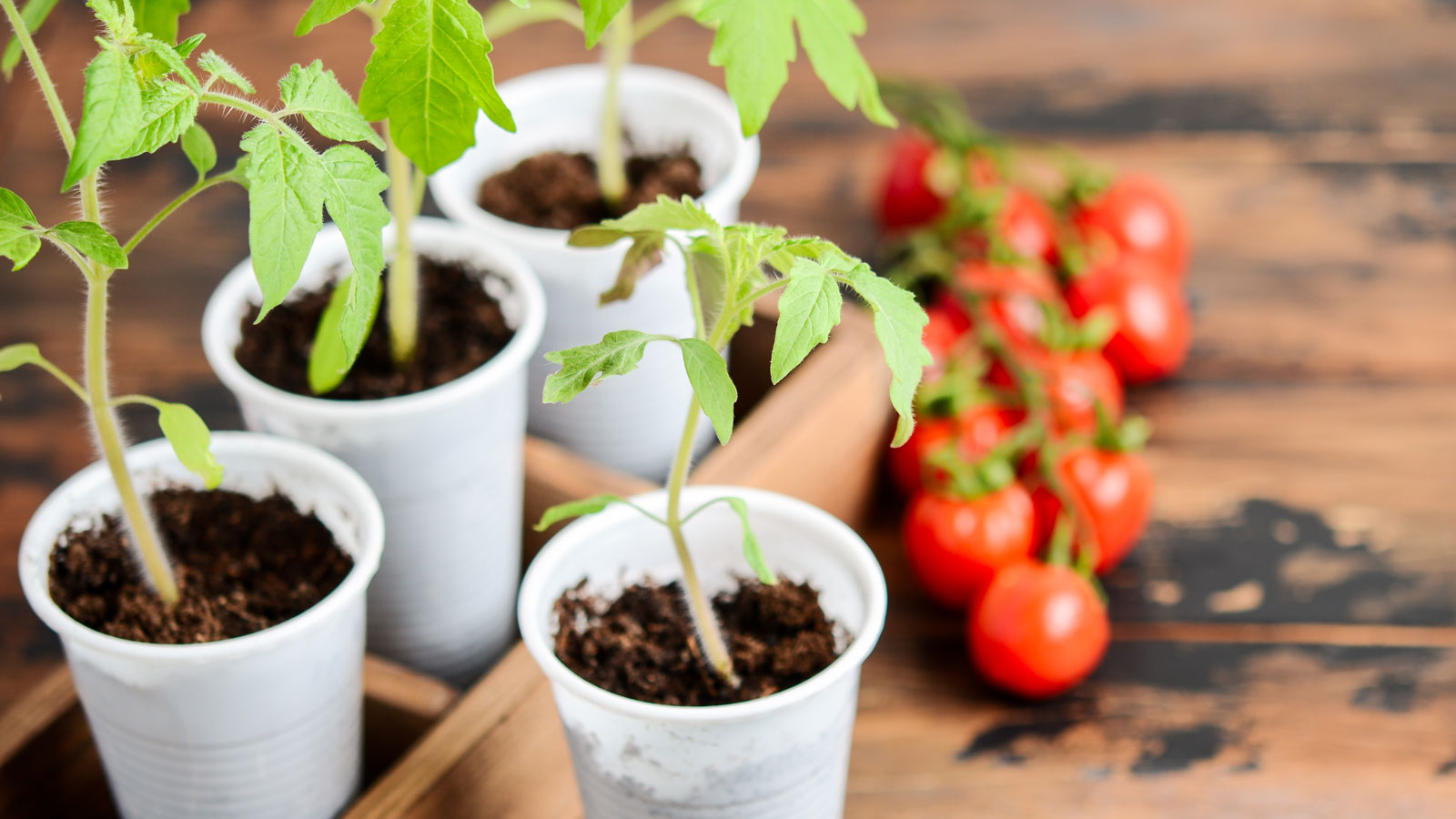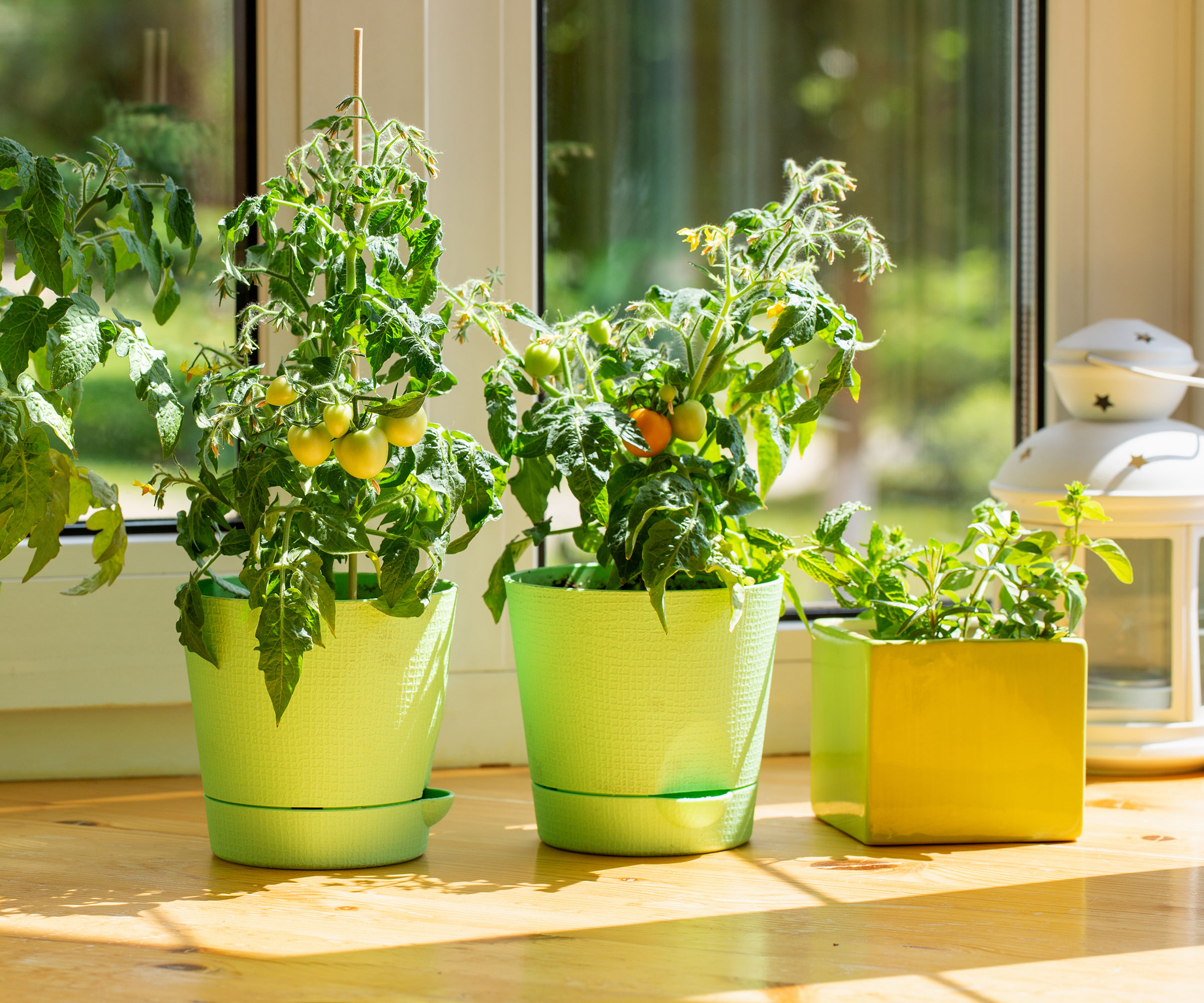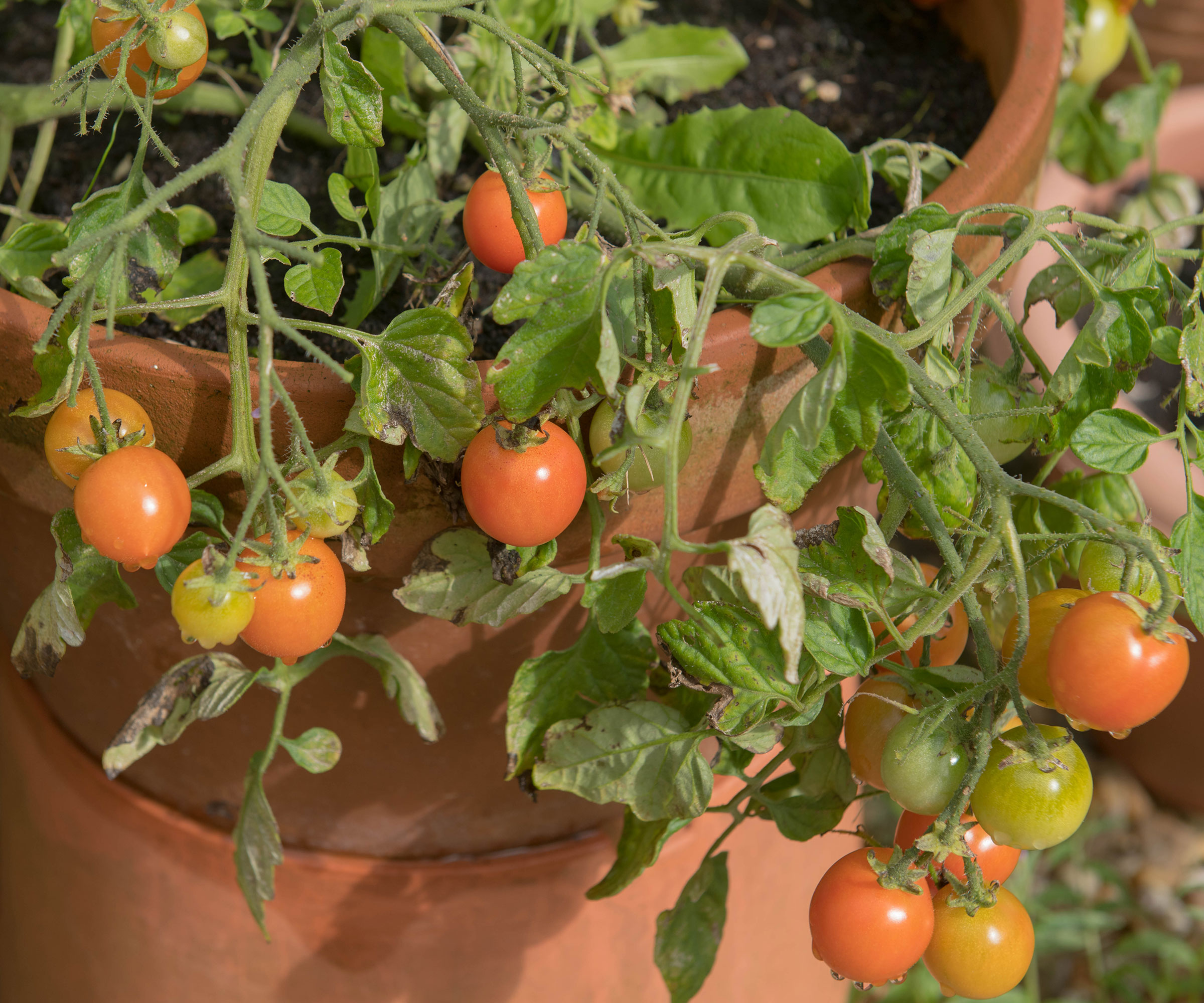Growing Tomatoes Indoors: Top Tips For Year-Round Tomatoes
Wishing you could make your tomato harvests last for longer? Growing tomatoes indoors allows you to control temperature and stretch out the season for bumper crops


Growing tomatoes indoors a one sure-fire way to extend a season of one of our most popular fruits. Typically, tomatoes are a warm season treat, and as cold temperatures beckon, plants die back and stop producing. Being able to grow tomatoes indoors tricks your toms into a more sustained period of growth.
You can preserve summer tomatoes by bringing ‘outdoor’ plants inside at the end of summer to save them over the winter. Older plants will gradually stop producing, so you can’t save them forever, but it’s possible to at least extend the harvest. However, you can also harvest indoor tomatoes throughout the year. Simply grow the right varieties in successive batches by starting new seeds every two weeks.
Getting Started Growing Tomatoes Indoors
In their native range, tomatoes are perennial plants that can live for several years. But the limiting factor in most home gardens is temperature. When the outdoor temperature plummets, these warm-season fruits will fail.
A common problem with growing tomatoes indoors is pollination. The flowers are normally pollinated by a combination of insects and wind, a duo that’s hard to find in the interior of a home. But with a little human intervention, plenty of light and warm temperatures, indoor winter tomatoes can succeed.

Starting Tomatoes Indoors From Seed
It’s easy to sow tomato seeds indoors in a seed starter mix. Plant them a quarter of an inch (6mm) deep in 6in (15cm) pots. When growing tomatoes indoors, keep the soil lightly moist and in a warm location to germinate. The top of the refrigerator is ideal. Once germination occurs (within five-10 days), move the pots to a brightly lit area, perhaps near a southern window.
Best Care for Indoor Tomatoes
Indoor tomato growing requires setting up the right combination of light, heat, humidity, soil and a good watering and feeding schedule. Container size and support are also important items for tomato development. Here we outline the best steps for successful cultivation:
- Lighting Conditions: Tomato plants need very bright and consistent light to flourish and develop fruits. When tomatoes grow indoors, it can be difficult not only to give them enough light but also the right quality of light. The plants need eight or more hours of bright light. To form fruits, they need red-orange light, which also gives off heat. To achieve this indoors, an incandescent grow light bulb is helpful. Because the indoor tomato planter may not get light on all sides of the plant, you need to turn it frequently to receive both natural and artificial light for even growth.
- Watering Needs: Just like outdoor plants, an indoor tomato planter needs to be kept moist but not soggy. Container plants dry out more quickly than those outside in the ground, so remember that an indoor potted plant has different watering needs. Allowing it to become too wet or too dry will stress the tomato plant. Use a soil meter or your fingers to monitor the moisture of the soil.
- Temperature & Humidity: Tomatoes thrive in temperatures between 60-85 degrees Fahrenheit (15.56-30°C). In a home’s interior, especially in winter, the temperatures are generally in the lower part of this range. You can use heat mats and soil heaters to increase the temperature around your plant. Placing it near a heat source is also helpful, but keep in mind it will cause the plant to dry out quicker.
- Soil & Compost: Like most vegetables and fruit, tomatoes prefer soil of high fertility and excellent drainage. Regular potting soil mixed by half with rich compost or well-rotted manure is perfect for tomatoes. Avoid a potting mix that’s high in peat as it will compress over time and smother the plant’s roots. It might be useful to make a sterile potting mix so that fungi, insects and diseases are not a problem.
- Fertilizer: For an indoor tomato plant, both vegetative growth and fruiting require a lot of nutrients. At initial potting, apply a time-release food. After two weeks, begin feeding the plant weekly with a soluble, balanced fertilizer. Once flowers begin to appear, switch to a tomato food or a high-potassium fertilizer. Kelp meal, fish emulsion or bone meal will give a similar result organically. Increase the fertilizer amount as the plant grows bigger.
- Pollination: Without pollination there can be no fruit. If you’re growing tomatoes indoors, the inside of a home lacks insects and wind – but you can easily mimic those elements. Shake the flowers of the plant, or place a gently blowing fan near the plant to mimic wind action. To mimic insect activity, use a cotton swab to transfer pollen manually from flower to flower.

Choose the Right Container
Use an unglazed pot that will breathe and drain well when growing indoor tomatoes. A 14in (36cm) container is a good start, but a 20in (50cm) is a better option and may increase yields. The container should be sturdy enough for the root and soil mass. Be sure your pot has plenty of drainage holes to prevent water buildup at the roots which could cause rot.
Sign up for the Gardening Know How newsletter today and receive a free copy of our e-book "How to Grow Delicious Tomatoes".
Pruning Indoor Tomatoes
When growing tomatoes indoors, pruning can increase air circulation, promote growth on producing branches and balance the plant. Tomato suckers appear at the leaf axils and are vegetative growth only. Once the plant has a nice complement of branches, begin removing these suckers by pinching them off when they are small.
Remove only the suckers below the first flower cluster. If you’re using pruners to remove this growth, make sure they are sterilized to avoid introducing disease.
Problems Growing Tomatoes Indoors
Indoor plants are rarely plagued by insects, although soil gnats in overly moist soil are common. Blossom end rot is common in all varieties of tomatoes, caused by a lack of calcium in the soil. There are sprays available to combat the problem and save the fruit.

Best Tomato Varieties to Grow Indoors
Success when growing tomatoes indoors is reliant on the variety of tomato you choose. Smaller varieties are the best kinds for indoor tomato growing. Avoid indeterminate varieties that will develop into vines and become too large. Compact forms are much easier to harvest and may be pruned or pinched to develop more producing branches.
The University of Florida conducted an extensive study on tomato varieties to identify those that would perform best indoors. Each variety in the study was dwarf or compact. Based on the study’s findings, the most compact yet productive tomato plants for indoor growing are:
- Sweet ‘N Neat Scarlet: This compact tomato plant is a dwarf variety bred to make the most of smaller spaces like window sills. A gorgeous cherry variety that’s perfect for containers.
- Micro Tom: A tiny ‘tumbling’ variety that is believed to be one of the smallest tomato plants you can grow. Despite its diminutive size, it’s a prolific cropper of sweet fruits.
- Siam: Determinate cherry tomato variety bred specifically for container growing. Capable of producing bumper crops of poppable toms.
Also consider: ‘Window Box Roma’, ‘Terenzo’, ‘Lizzano’, ‘Toy Boy’, ‘Red Robin’, ‘Florida Petite’, ‘Tiny Tim’ and ‘Tumbler’. There are also hanging cultivars that can create dramatic arching plants filled with fruit. ‘Yellow Pear’ is a golden tomato hanging form and ‘Burpee Basket King’ is a trailing variety with small red fruits.

Bonnie Grant is a professional landscaper with a Certification in Urban Gardening. She has been gardening and writing for 15 years. A former professional chef, she has a passion for edible landscaping.